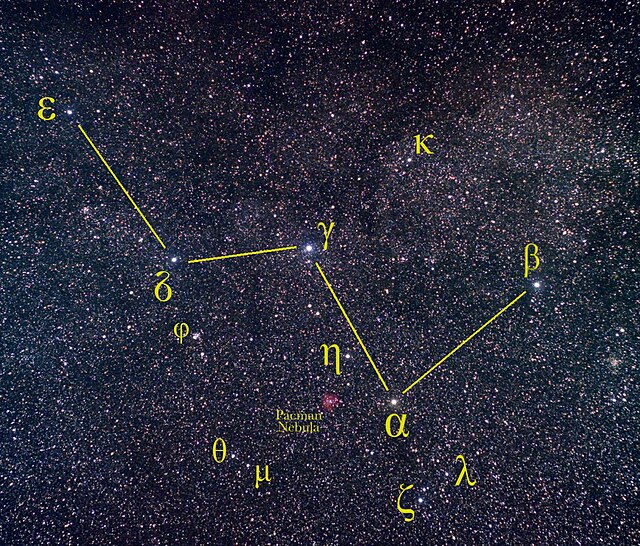Alpha Cassiopeiae or α Cassiopeiae, also named Schedar, is a second-magnitude star in the northern constellation of Cassiopeia. Though listed as the "alpha star" by Johann Bayer, α Cas's visual brightness closely matches the 'beta' (β) star in the constellation and it may appear marginally brighter or dimmer, depending on which passband is used. However, recent calculations from NASA's WISE telescope confirm that α Cas is the brightest in Cassiopeia, with an apparent magnitude of 2.240. Its absolute magnitude is 18 times greater than β Cas, and it is located over four times farther away from the Sun.
Cassiopeia starfield showing α Cas, the orange giant, in relation to the other stars in the constellation
Illustration from Gerardus Mercator showing α Cassiopeiae near the heart of the celestial Queen
Cassiopeia (constellation)
Cassiopeia is a constellation and asterism in the northern sky named after the vain queen Cassiopeia, mother of Andromeda, in Greek mythology, who boasted about her unrivaled beauty. Cassiopeia was one of the 48 constellations listed by the 2nd-century Greek astronomer Ptolemy, and it remains one of the 88 modern constellations today. It is easily recognizable due to its distinctive 'W' shape, formed by five bright stars.
Cassiopeia in her chair, as depicted in Urania's Mirror
Cassiopeia in the night sky
Kappa Cassiopeiae and its bow shock. Spitzer infrared image (NASA/JPL-Caltech)
Planetary nebula IC 289 is a cloud of ionised gas being pushed out into space by the remnants of the star's core






